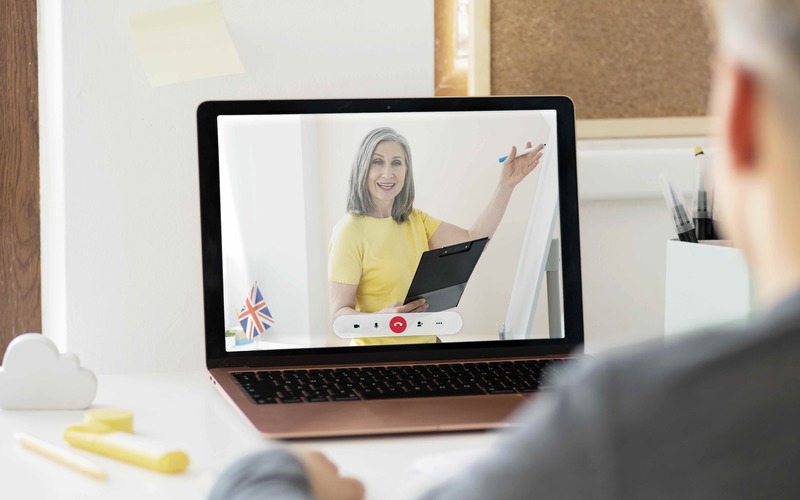Tips for having more impact with online presentations

Have you ever secretly answered an e-mail, sent Whatsapp messages or checked your Facebook while "watching" an online presentation? I'm sure you have. And you're not alone. An American study shows that with online presentations, we are often engaged in many other activities such as work (65%), your smartphone (55%), or even online shopping (21%).
When you present online, the big challenge is to keep the attention of your audience. What often works in live presentations does not always translate to a virtual audience. How do you get more impact and win the battle with these online jammers?
Here are 5 tips to make sure your audience focuses on your presentation and not on their email.
Tip 1: Keep it short and powerful
Our attention span is much shorter online than during physical presentations. On average, we can concentrate for about 10 minutes during a presentation. So you can do two things: firstly keep your presentation as short as possible and secondly surprise keep your audience on their toes by incorporating interaction.
Think in advance about the purpose of your presentation and focus on the desired result, not on the details. Strike out everything that is not vital. Ideally, your presentation should last a maximum of half an hour. Better a shorter presentation that makes an impact than a long sequence of boring slides.
2. Make it interactive
Ask a question, get participants to respond, start a discussion, share a remarkable insight, tell a joke... Because of the physical distance between you and your audience, it is much more difficult to see what people think of your story, whether they have questions, whether it is clear. Therefore, regularly tune in a moment to involve your audience.
With Zoom and some other platforms, for example, you can launch a poll. Or allow reactions via the chat. Activate your audience. Your listeners will be grateful to you and will feel more involved in what you have to say.
3. Cameras on!
In an online presentation, of course, you turn on your camera yourself, but if possible, let your listeners turn on their camera as well. Not only is it much more pleasant to see the participants, it also allows you to respond better to their reactions. The fact is: your presentation will go smoother if you can make visual contact with your audience.
Also make sure that you make the best possible appearance. Switch your camera to full screen every now and then. This also ensures more involvement. Also pay attention to the lighting. For example, do not sit in front of a window, because you will completely disappear into the light. With these tips you make sure you look perfect in front of the camera.
Tip 4: Create visual gems
The human brain is primarily triggered by what it sees. So spend some extra time and effort to make sure your audience gets an attractive presentation. And that means less text and more images. Go for quality images that support your message and stimulate curiosity. This will make your presentation more engaging. Beautiful and royalty-free images can be found here.
Be sure not to present in editing mode, but use the presentation mode. Presenting in edit mode is the most amateurish thing you can do. It's just sloppy. Also avoid complex animations. If the internet connection is not optimal, your audience may not see the smooth animation you've worked so hard on. Save yourself the trouble and keep it simple.
Tip 5: Use storytelling
People love stories. Especially in these times of virtual meetings and remote communication. It is connecting and pleasant to listen to someone who tells with passion and enthusiasm. Stories have an inspiring effect and ensure a higher level of attention. Storytelling is not only a way to inspire the audience, it is an excellent tool to present your ideas in a powerful way.
Bonus tip
The great thing about giving online presentations is that you can practice at home in advance using the screen recording function. So record your presentation on video, so you can go through it afterwards and adjust the way you present. Pay particular attention to your body language, eye contact, voice use and whether you stay within the time limit.
More info: Online Presentation Course





